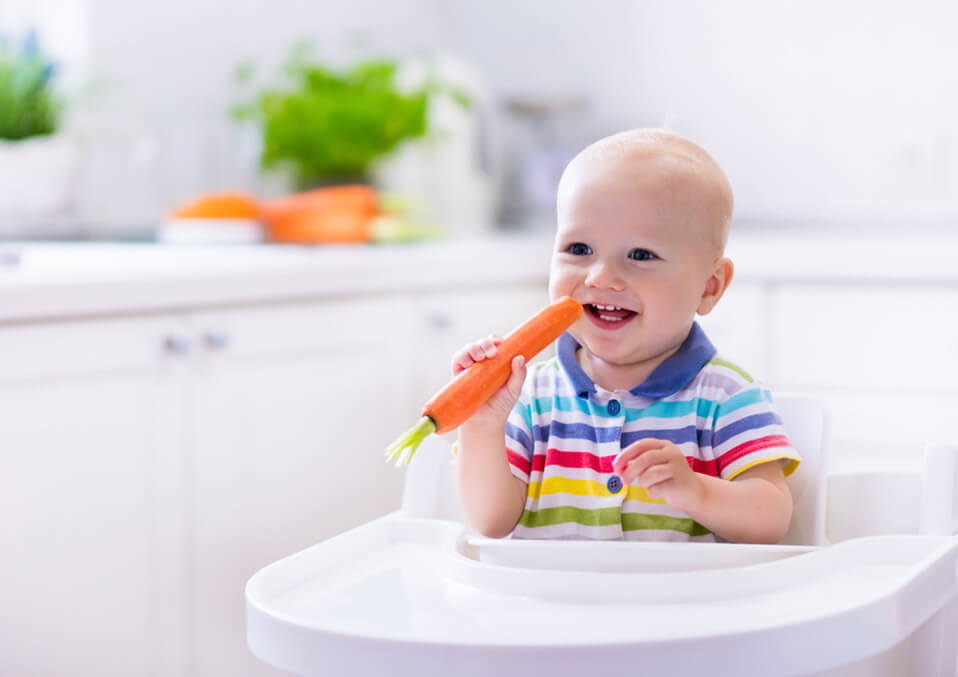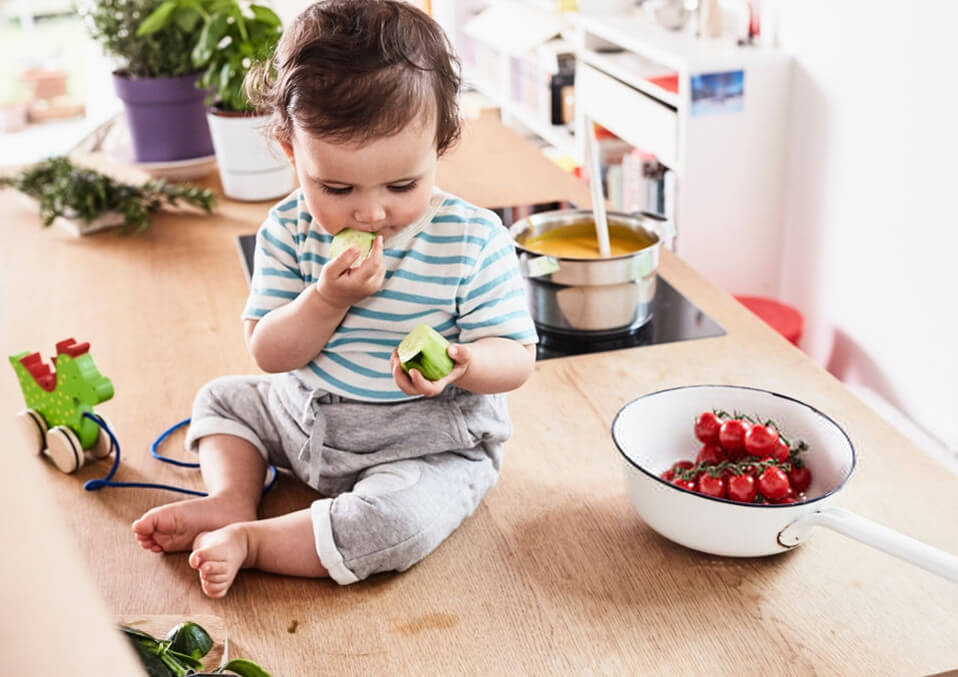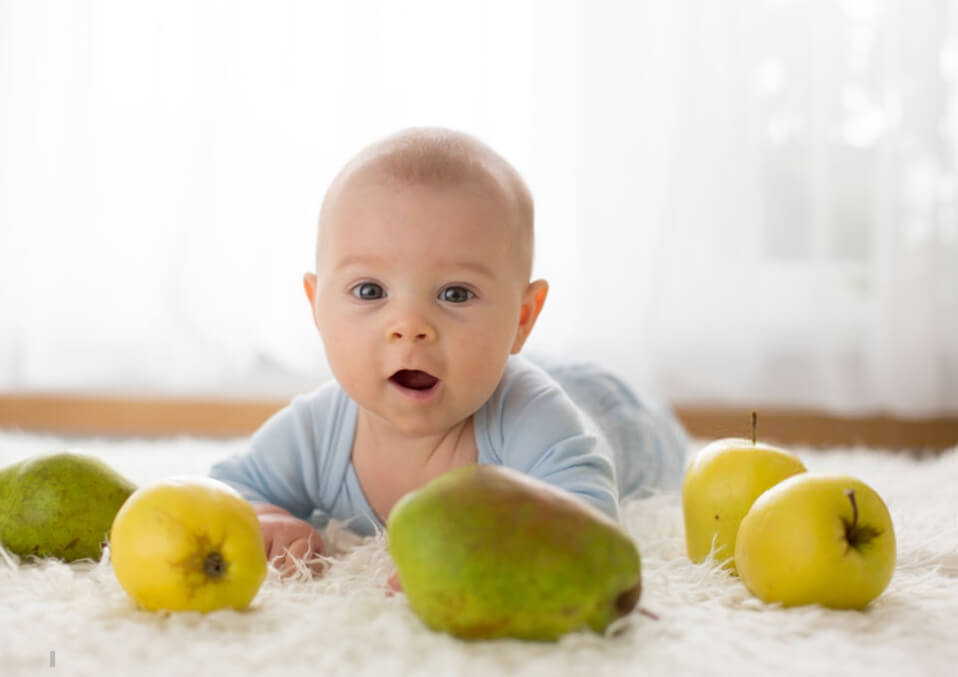
The modern times have brought out many changes in the lives of many people. Many new approaches and systems have been introduced. With regard to taking care of babies, it is no exemption. About eight years ago, a new approach to feeding babies was popularized. Baby-led weaning is a process wherein age-appropriate foods are introduced to babies. It can either be soft-cooked, mashed or cut into small pieces.
To clear up an apparent contradiction on the term, baby-led weaning is coined from its British origin. In the UK, weaning means adding complementary foods, while in the US, weaning means giving up breastfeeding. Thus, baby-led weaning encourages skipping purees and spoon-feeding without giving up breastfeeding. Although the parents are doing the food preparation, the baby is in control of what and how much he will eat or how long will he eat his meal. It is giving babies the liberty to make all food choices base on what is prepared for them. Although the process has been used by many cultures across the world, it gained popularity with a book written by British authors Gill Rapley and Tracey Murkett entitled Baby-Led Weaning. Since then the enthusiasm with this babies’ self-feeding process arises.
Pros and cons

Babies who start eating solid food with baby-led weaning are more familiar with textures and flavors than those who are not. This can lead them to have a more varied and healthy food preference later in life and they are less likely to develop allergies too.
They are also less prone to obesity and becoming overweight. In spoon-feeding, the parents are in control making babies ignore the feeling of fullness and consume more than what they need. Since they are eating independently, they will stop eating once they are full.
It also assists in the motor development of a child. It supports eye and hand coordination, dexterity and chewing skills.
As for the parents, you don’t have to allot time preparing, blending and storing homemade baby foods.
Read also: The healthiest vegetables to feed your babies
Babies can spend meal time with the whole family. An effective way of teaching the baby is through imitation and observation.
One downside of this process is that it can be messy – and we mean really messy, especially to those who are just learning to hold and put it in their mouth. Invest in an oversized bib to cover your baby. Put newspapers on the floor under the baby’s high chair when it’s feeding time.
Consider choking hazards. Avoid giving babies foods that can be dangerous when swallowed like grapes, cherries, nuts. Consider the sizes of chopped fruits and vegetable, it should not exceed a centimeter. Be sure that the baby is sitting properly while eating to avoid choking.
Allergic reactions. Keep an eye on possible foods that may cause allergies on your babies.
For more safety, it is better to orient family members or those who are taking care of your babies about your baby’s meal and the necessary precautions in serving them. Babies should not be left alone while eating so that one can immediately see signs of hazards just in case.
Is your child ready for it?

According to experts, the babies’ digestive system is ready once they reached six to eight months old. During this time, parents can start baby-led weaning on their little ones.
Check if the baby is physically ready for the said method. First, he should be already capable of sitting without support and has lost the tongue-thrust reflex (the natural way of automatically pushing solid foods out of the mouth with his tongue.) By this moment, he must also know how to pick food using the thumb and the forefinger, not the palm and fingers.
Readiness for the method may vary on babies’ particular development. Also, take note of possible allergic reactions. It is better to consult your child’s pediatrician before doing it.
What can I feed my baby?

There are some things to be considered when introducing your babies to eating solid foods. Be sure that it cut into small pieces to avoid choking hazards. Also, consider texture. The food that should be given should be soft and easy to smash with your babies’ little fingers. Raw, hard vegetables and fruits should be steamed or roasted to fit on babies.
Here are some suggestions:
- Soft, raw fruits like banana, avocado, and strawberries. Just like adults, babies are also enticed with the foods’ color.
- Steamed carrots, broccoli or greens are not just colorful, they are also healthy and flavorful. Potato fries can be easily grasped by babies making eating easier.
- Feeding peanuts to babies at an early age lessens the risk of peanut allergies later in life. But never give your babies whole peanuts or spoonfuls of peanut butter. You can smear peanut butter on small pieces of toast sticks before giving it to babies.
- Salmon is packed with omega-3 fatty acid that is vital to babies’ cognitive development. You can feed it to your baby at least once a week. Be careful to remove any bones.
Read also: Best fish recipes for babies
- Leafy greens can also be introduced to your babies during this period. They might refuse it once but they can learn to appreciate it later. Spinach, kale, chard and fresh basil and other herbs can be good options too.
- Mashed butternut squash is not just sweet and colorful, it is rich in vitamin A which is important to keep a healthy immune system and good vision.
- Eggs contain protein for healthy bones and teeth. It is rich in healthy fats and choline which is good for the eye. You can prepare an omelet using scrambled egg and vegetable puree. Cut in small pieces and serve. Chopped boiled eggs can also be as healthy.
- Cereals made from oats, brown rice, quinoa and other whole grains such as whole-wheat pasta and wheat toast are high in fiber and flavorful.
- Dairies like soft pasteurized cheese and yogurt are packed with calcium, protein and good fats.
- Skip artificial sweeteners and salt in preparing foods for baby-led weaning. It will only cover the foods’ natural flavor and will only make babies prefer salty and sugary foods later. Avoid prepackaged treats like chips and cookies, which are loaded with additives and trans-fats.
On a final note
Although it is baby-led weaning, babies should not be left alone while eating. Parents should talk and assist the babies. This way, mealtime can also serve as one of their bonding moments. It is also better to let the baby learn at his own pace. Do not force the baby if he doesn’t want to eat. It takes time and efforts but it’s all worth it.
Read also:
- The Best Baby Food Feeder Choices
- Healthy Pregnancy: Pasteurized Food During Pregnancy
- Buying an Electric Baby Food Warmer – The Top Choices


